Plywood Plank Walls – Creating Faux V Groove Planks
I’m installing plywood plank walls in the Jack and Jill bathroom as well as both bedrooms in my current remodeling project. I’m using the same technique I used on my studio ceiling to achieve the look of 3/4″ V groove, tongue and groove, Pine planks.
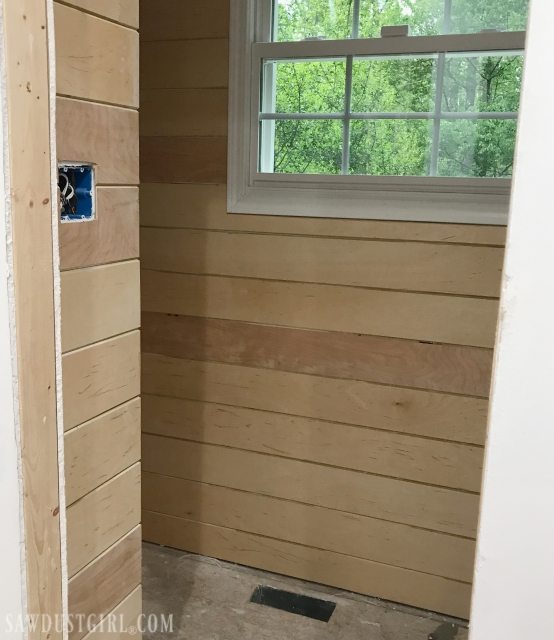
The underlayment was about on fourth the cost of the actual Pine planks.
However, the underlayment had tons of voids, the veneer was really thin and bubbly, and the edges were super rough even before I beveled them. It took a lot of extra work to make it look really good when finished. This time, I’m using 1/4″ Purebond plywood. It’s is more expensive than the underlayment but is still half the cost of using the Pine planks. There are hardly any voids, the veneer is thicker with no bubbling and the edges are pretty dang smooth, before and after beveling.
I bought 4×8 sheets of 1/4″ Birch plywood and used my track saw to rip them into 6″ wide strips.
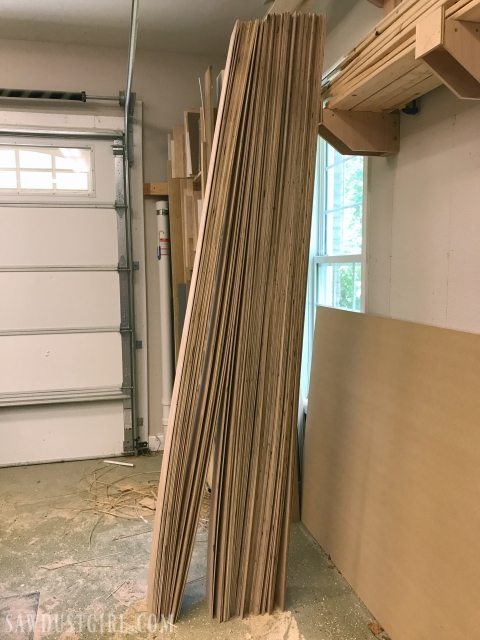
Then Madison spent a few hours at the table saw, beveling the edges.
- Make sure the best side of the plywood is face down on the table saw.
- The blade is set at 45º.
- Bevel one edge then spin the plank around and run the other edge through — good side still face down.
- Use push blocks to keep your hands away from the blade. Madison liked the MicroJig GRR-Rippers.
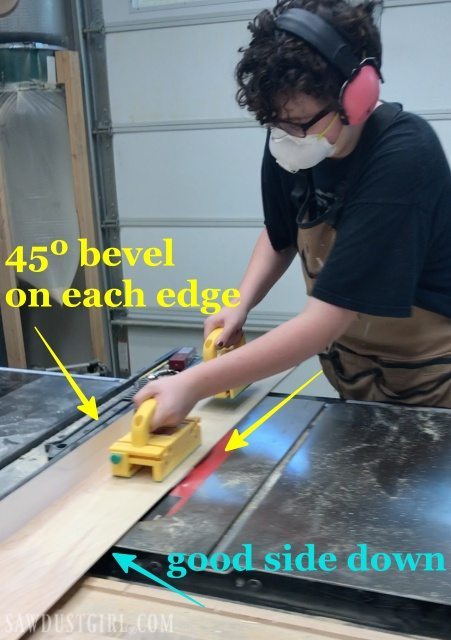
Installing V-Groove Plywood Plank Walls
First, I used a stud finder to locate and mark all the wall studs.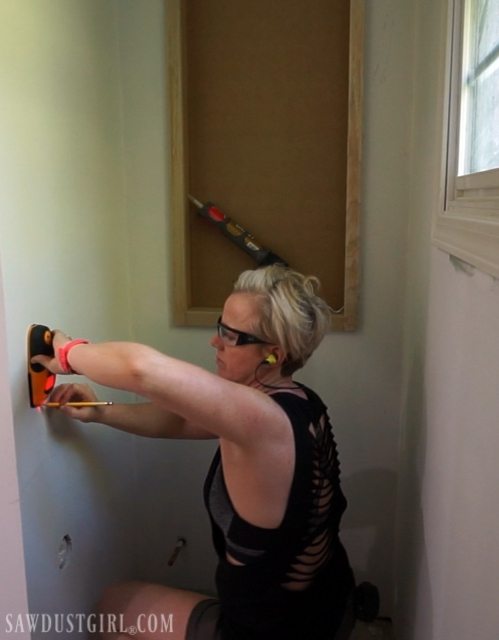
A laser level is a great tool to ensure the plywood planks are level on all walls!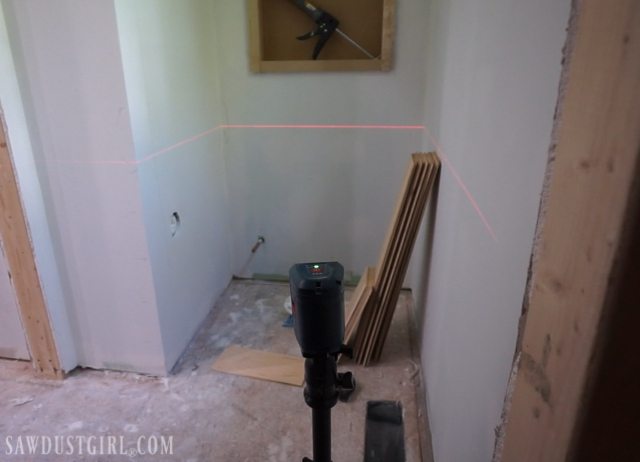 To secure the plywood planks to the walls, I used construction adhesive and 23 gauge pin nails.
To secure the plywood planks to the walls, I used construction adhesive and 23 gauge pin nails.
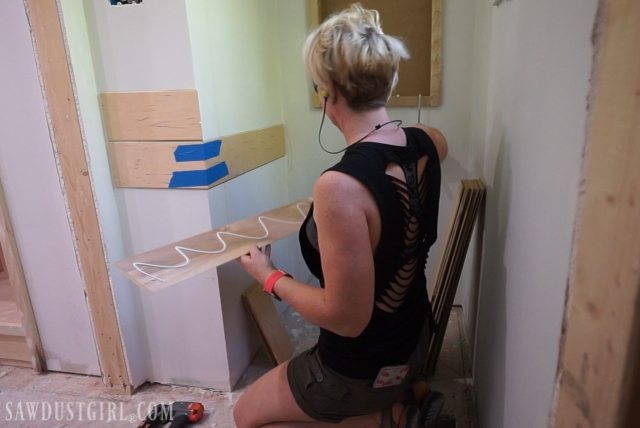 For the outside corner, I beveled the ends of the adjoining planks.
For the outside corner, I beveled the ends of the adjoining planks.
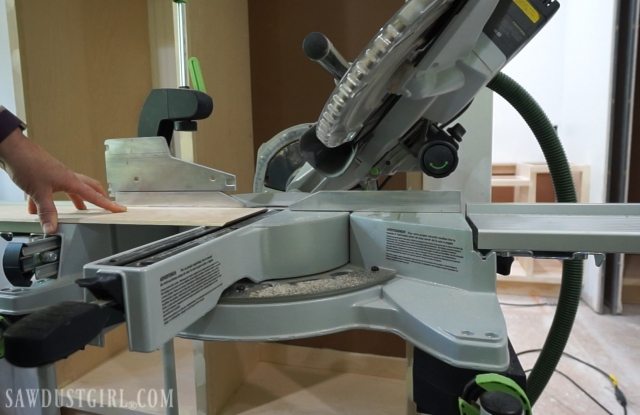
I applied Titebond Quick and Thick Glue and used painters tape to pull the planks together into a tight joint.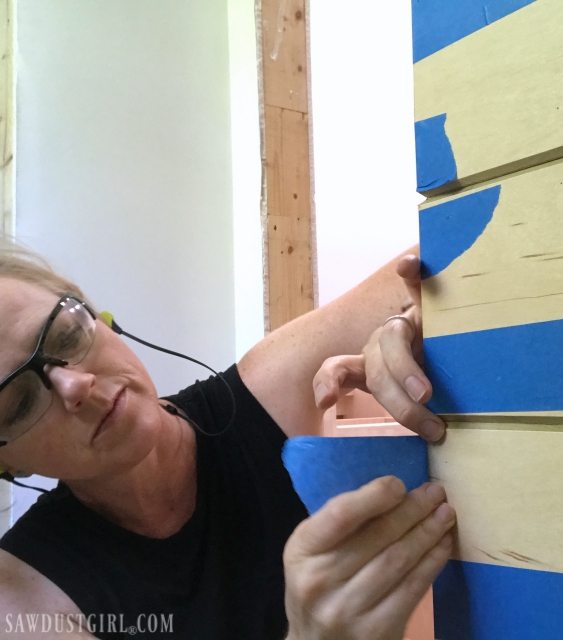
Then I secured each side of the corner with pin nails.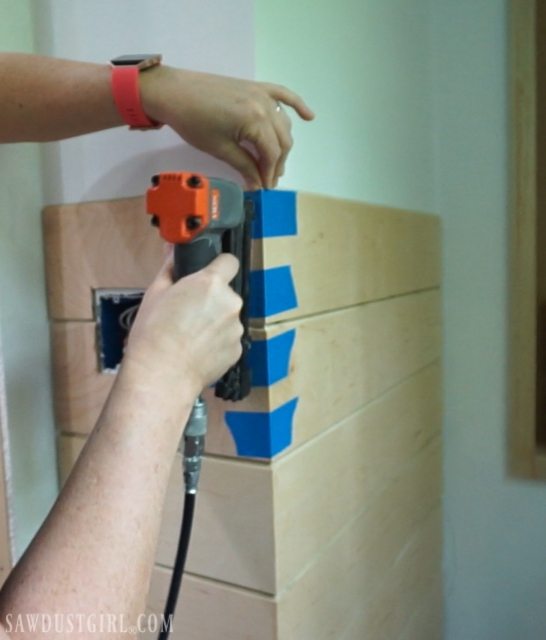
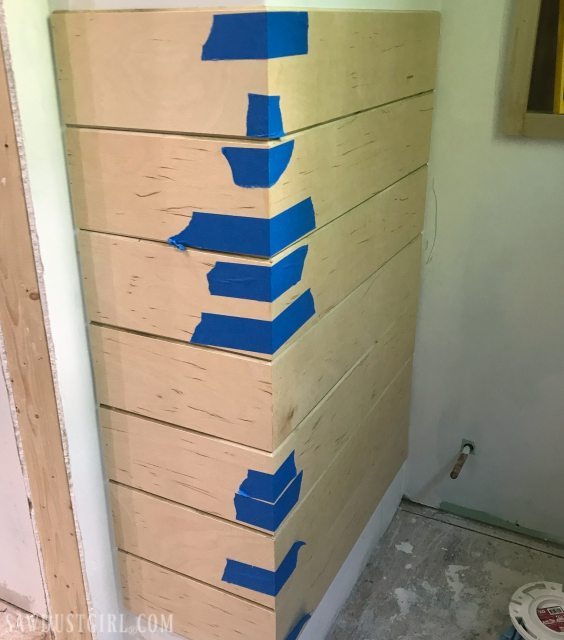
I used an oscillating multi-tool to cut out for the junction boxes.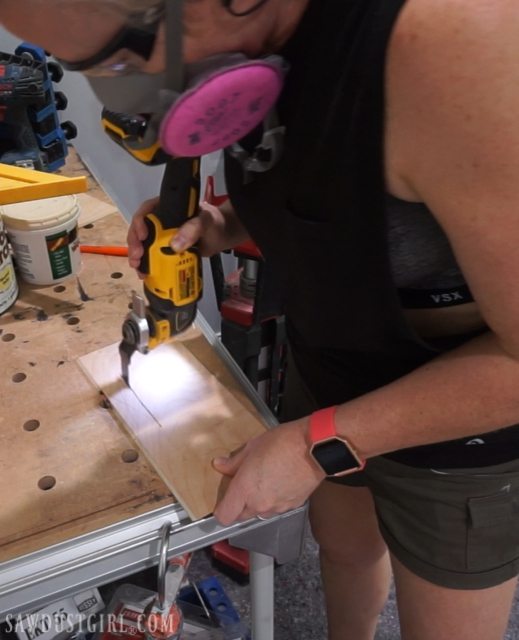
I trimmed the bottom row of my plywood plank walls about 1/2″ off the floor so they won’t get wet if water ever gets under the base. The base will be installed before painting so that portion of the planks won’t have any protection against water.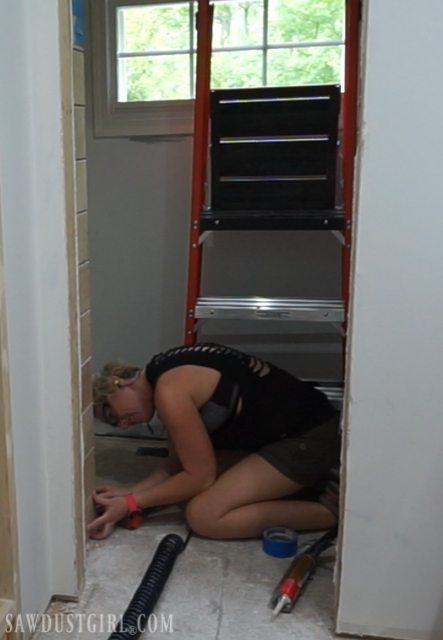
I set the laser level at the center of the V-Groove on one row of planks on the first wall to move on to the next wall. That line is where I started the first row on the new wall.
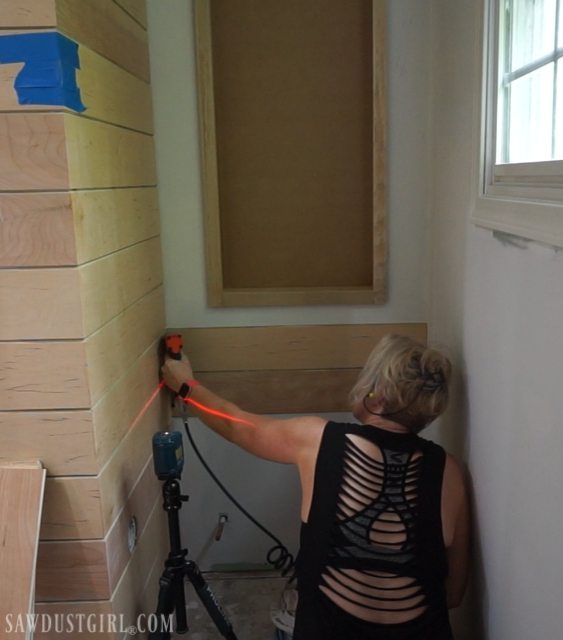
I continued my way around the room with the laser level, adhesive and nails.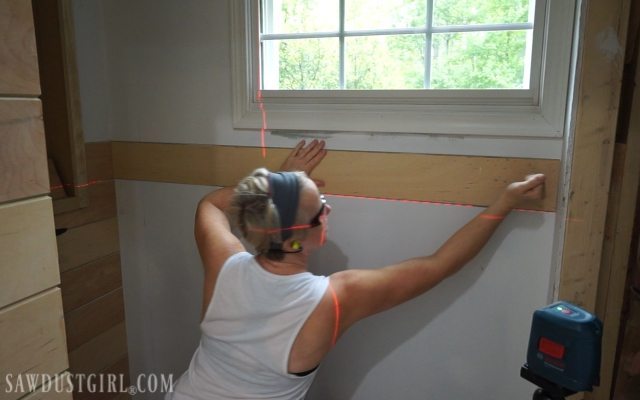
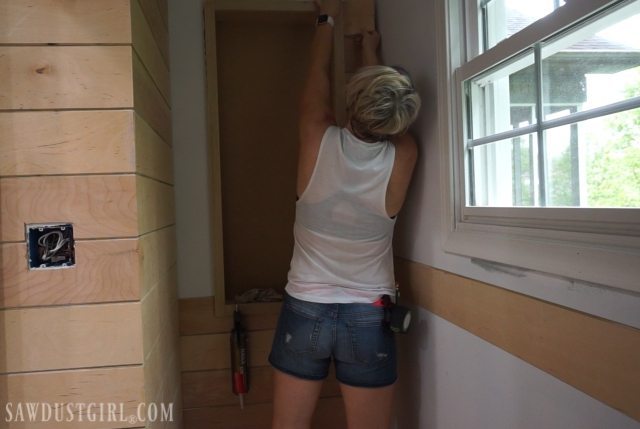
Every 5 or 6 planks I would move the laser level to make sure I was maintaining level with the plywood plank walls.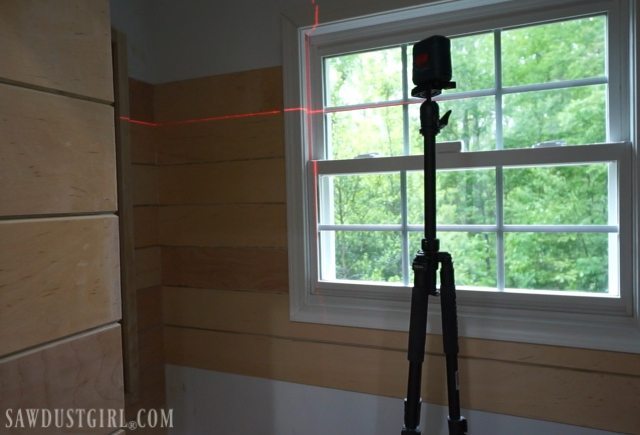
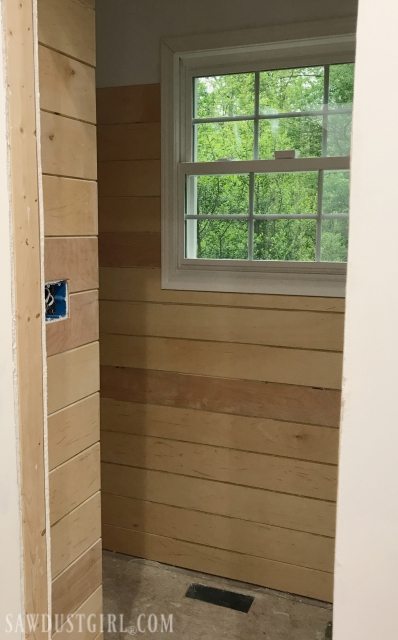 I know some of y’all love the look of the wood but I will be painting. YOU can leave your plywood plank walls unpainted if YOU want to. But I have a vision for my space and it involves white walls. 😉
I know some of y’all love the look of the wood but I will be painting. YOU can leave your plywood plank walls unpainted if YOU want to. But I have a vision for my space and it involves white walls. 😉
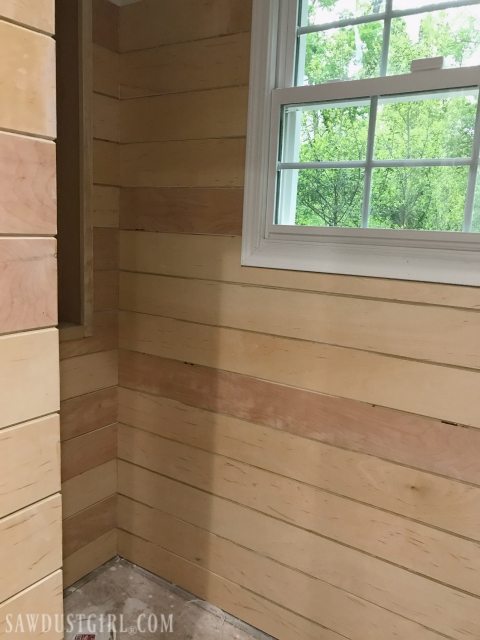 I installed crown moulding which is a bit of a controversy in the “bathroom renovating” space. I am installing a high tech ventilation fan in this room so I’m not concerned about humidity. However, installing crown moulding in a bathroom is definitely something you should research before you make an informed, personal decision.
I installed crown moulding which is a bit of a controversy in the “bathroom renovating” space. I am installing a high tech ventilation fan in this room so I’m not concerned about humidity. However, installing crown moulding in a bathroom is definitely something you should research before you make an informed, personal decision.
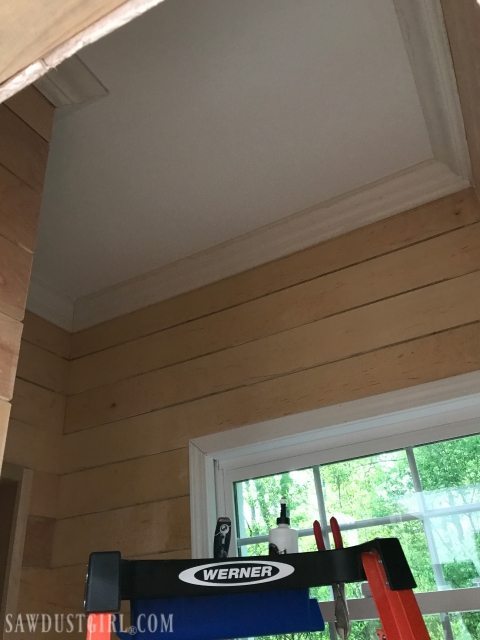
I’ve installed quite a few Pine plank walls and ceilings in this house. The thing I don’t like about painted solid wood planks is the visible movement at the V-Groove. You can caulk it when it’s contracted but then it expands again and the caulk gets squeezed out and you have to scrape it away. Plywood is more stable so I don’t expect to have that kind of noticeable movement at the V.
Visibly, the two installed products look very similar. Which is why I go to the trouble of ripping and beveling the 1/4″ plywood. The pine plank (left) is 3/4″ thick but only the top 1/4″ creates the V-Groove.
Because the entire side of the 1/4″ plywood is beveled, the depth of the V-Groove on “real pine plank walls” and on 1/4″ beveled plywood plank walls are about exactly the same. For 1/2 the price. A lot more work but hopefully no movement. If anyone EVER wants to remove the plank walls they’re have to completely reface the drywall because of the construction adhesive. I don’t plan on ever tearing out a V-Groove plank wall. It’s a classic architectural element! 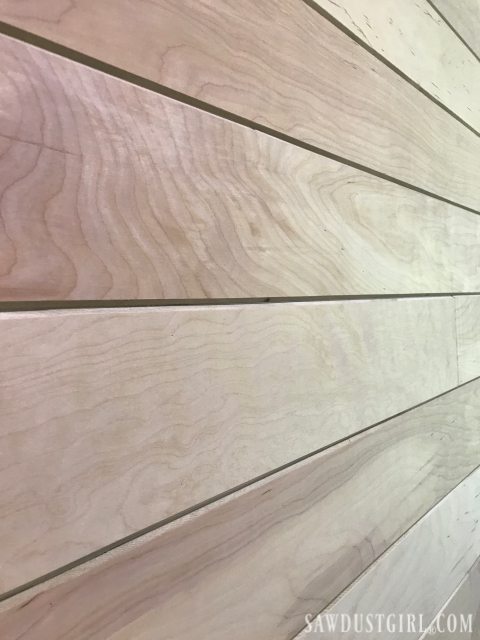


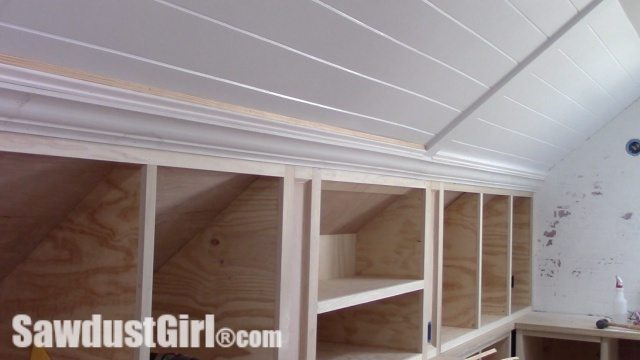
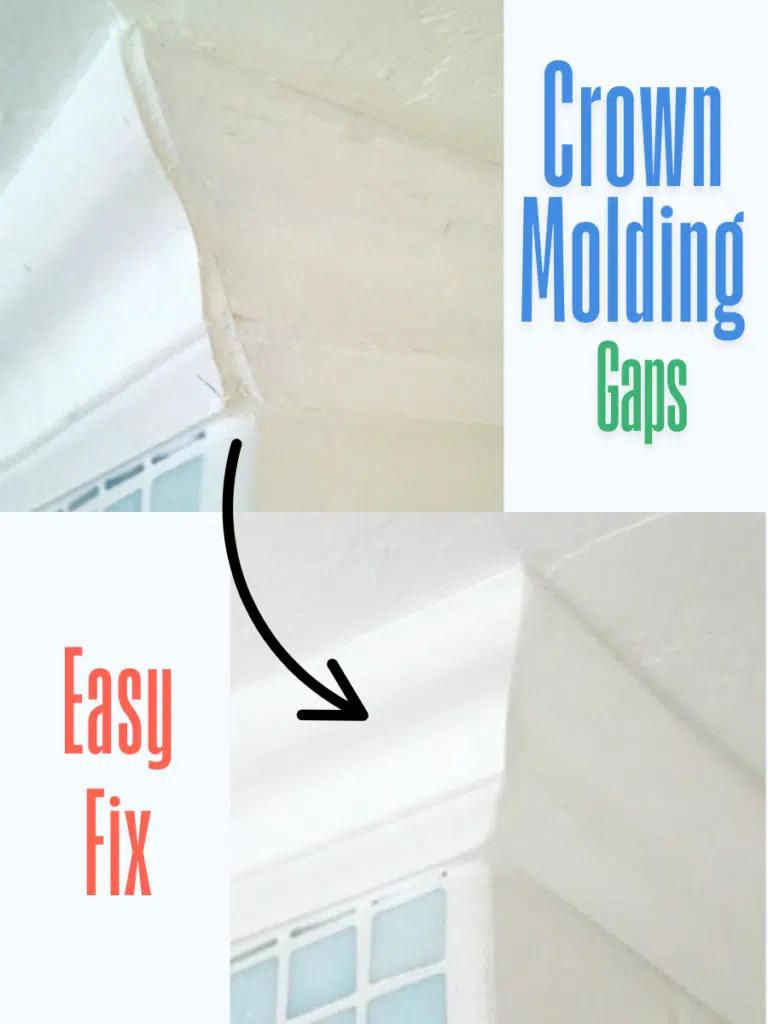
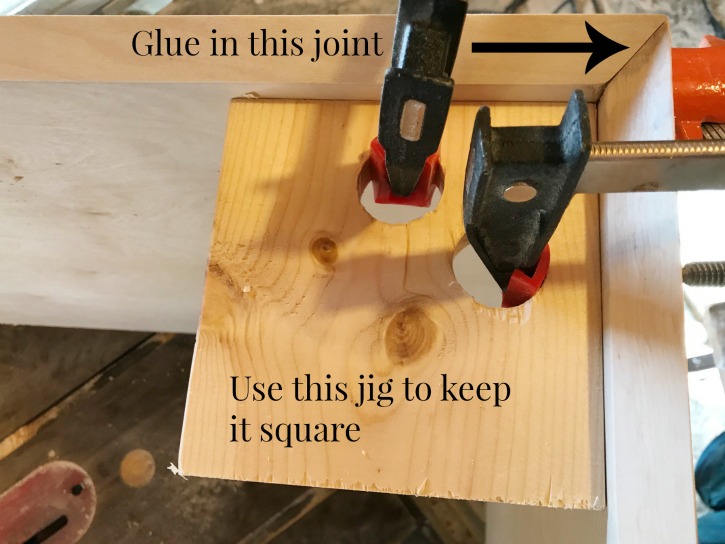
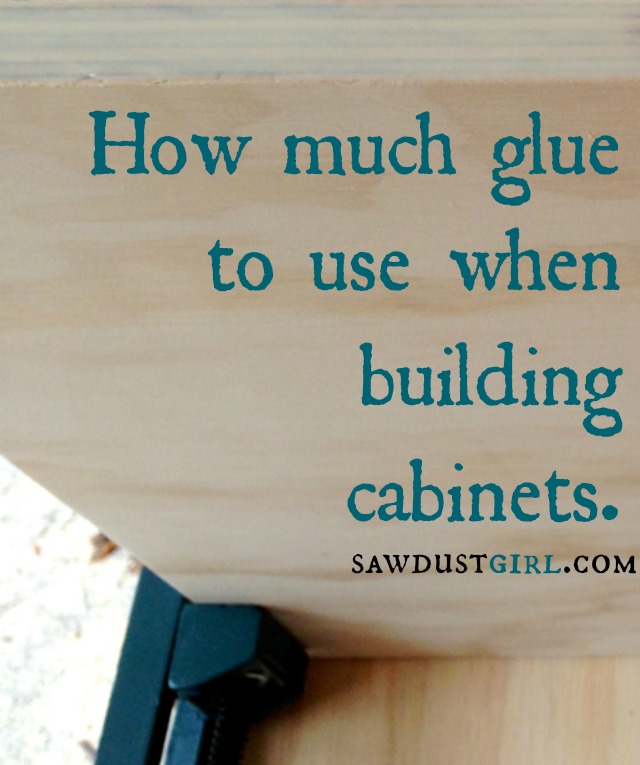
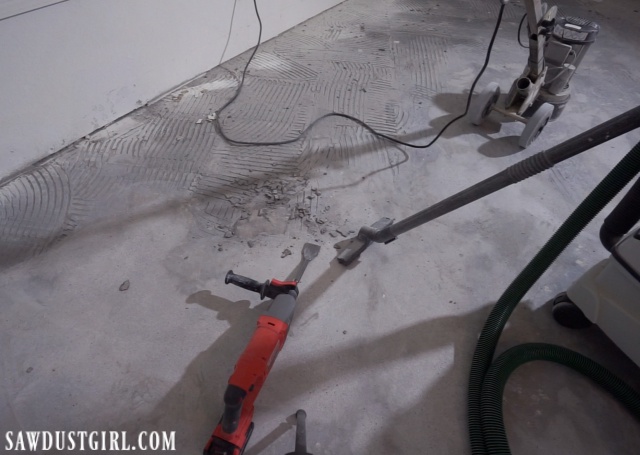
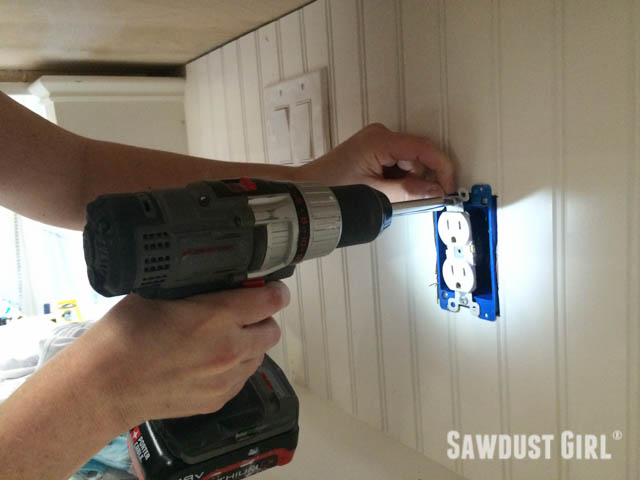
I don’t own or live in that house anymore but they still looked great when I left.
Well done! How are the planks holding up after 3 years or so? Anything you would do differently today?
No I didn’t because I sanded and caulked them before painting. If you left the wood raw, it would absolutely look like plywood (because it is).
Did you have any issues with the beveled edges of the plywood looking rough and frankly, like the edge of a piece of plywood, after priming and painting? I love this idea and am considering doing this instead of tongue and groove plank in a new townhouse I am buying, but am concerned about the v-grooves looking like beveled/cut plywood. I want the grooves to look completely smooth inside. Thanks!
On the inside corners one plank covers the other. Both ends are cut straight, no need to bevel.